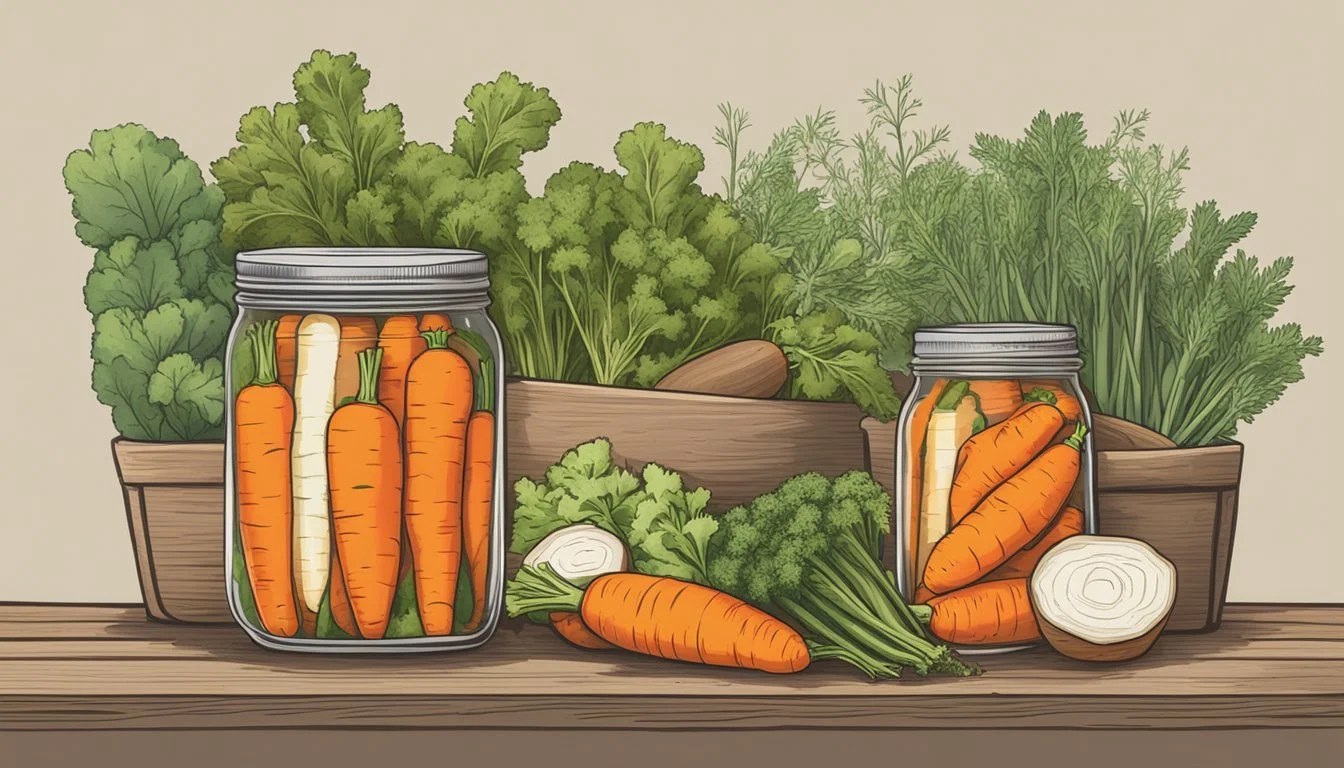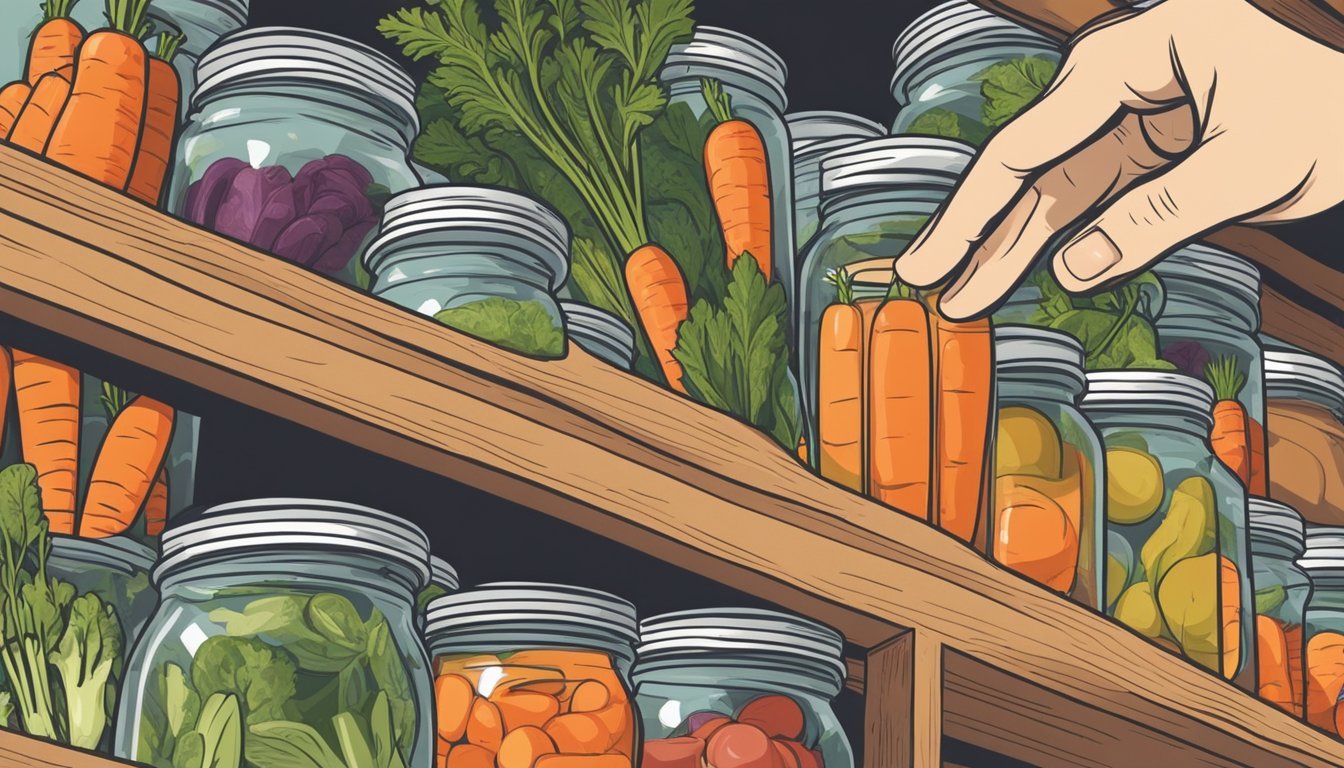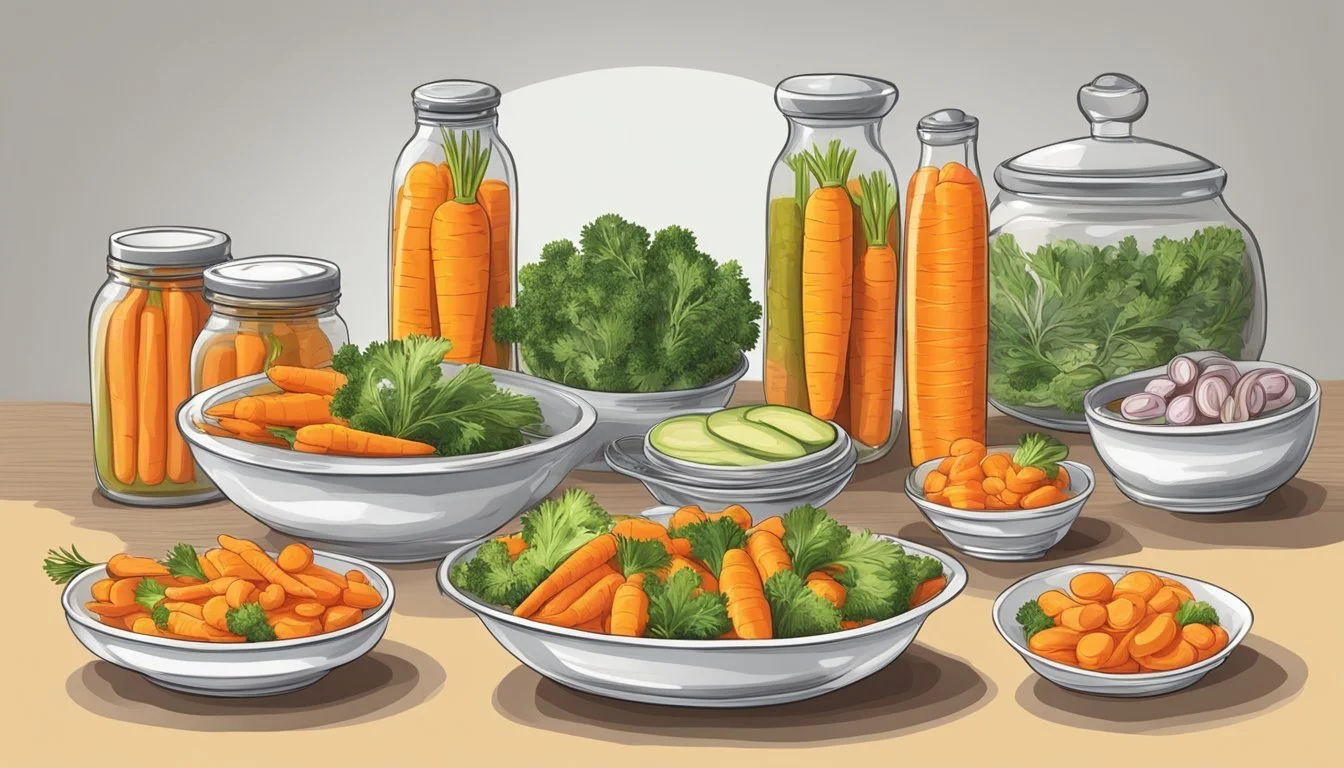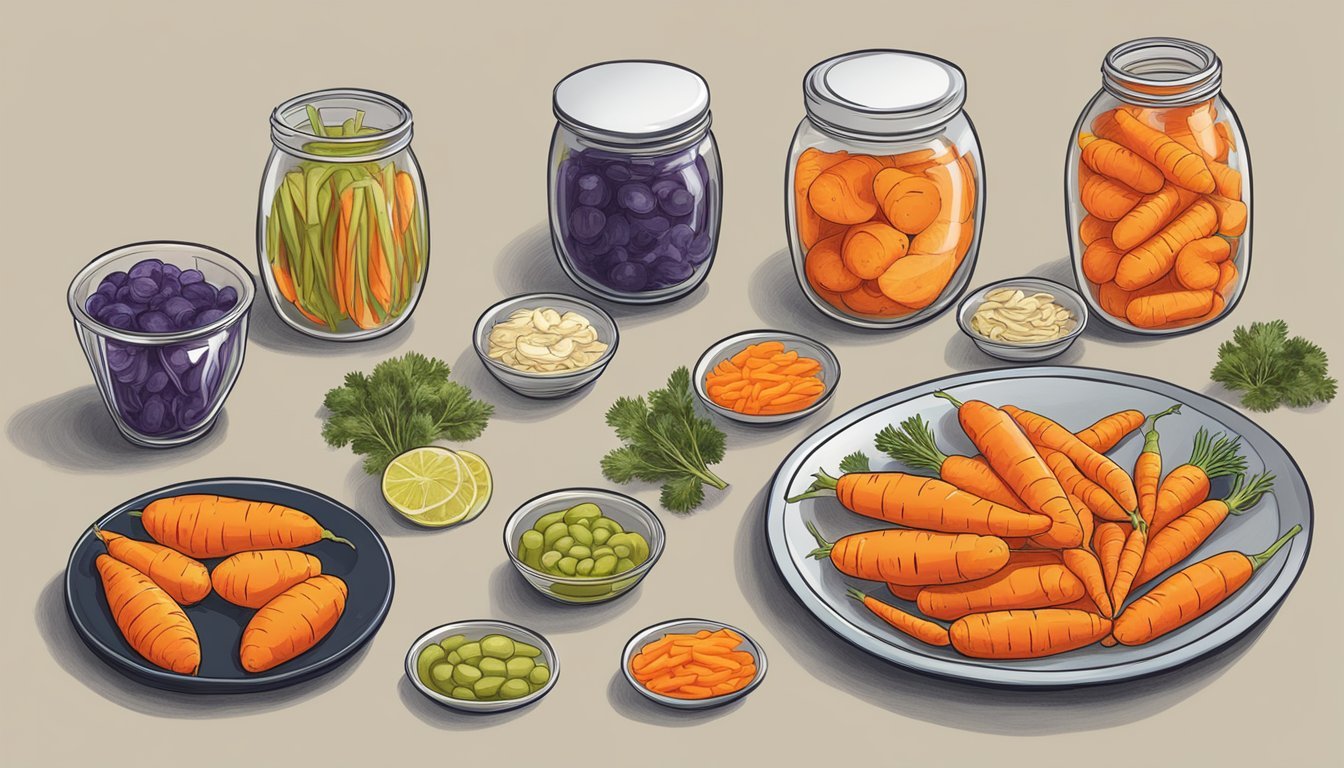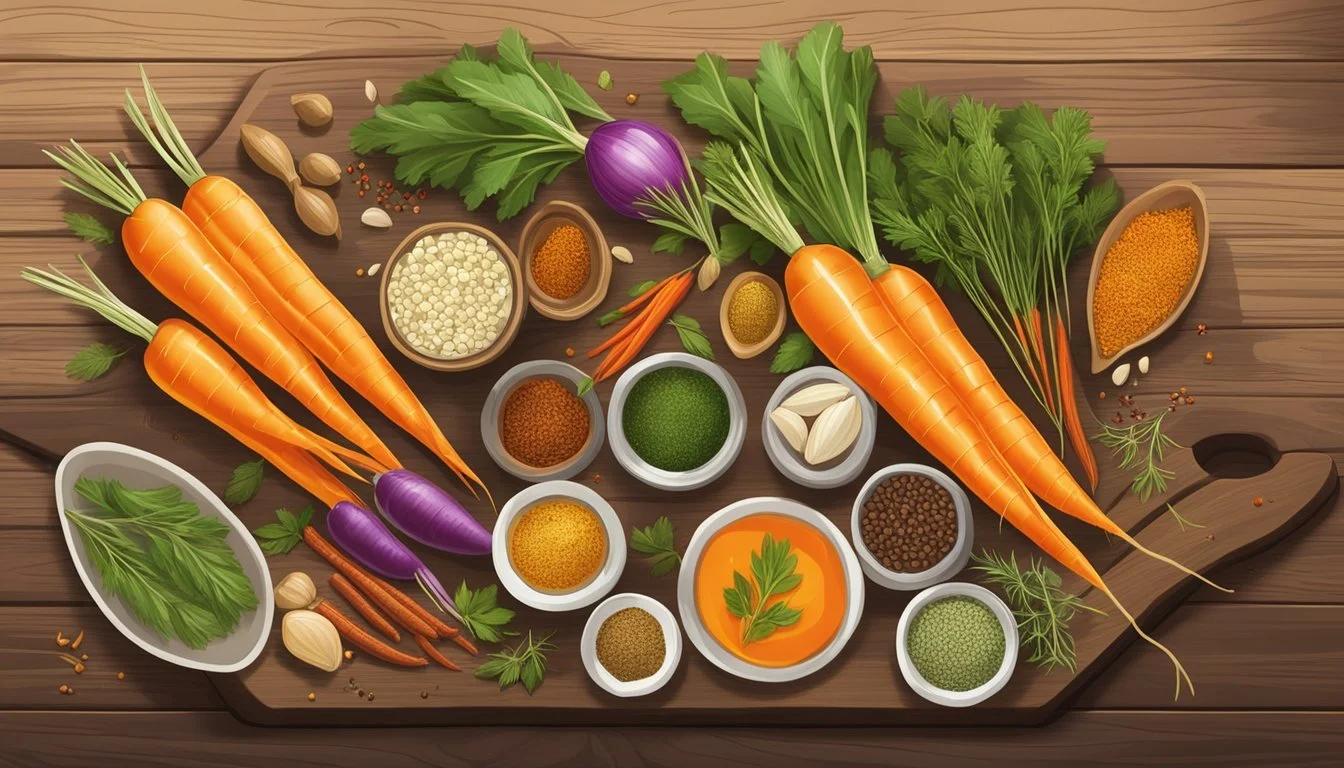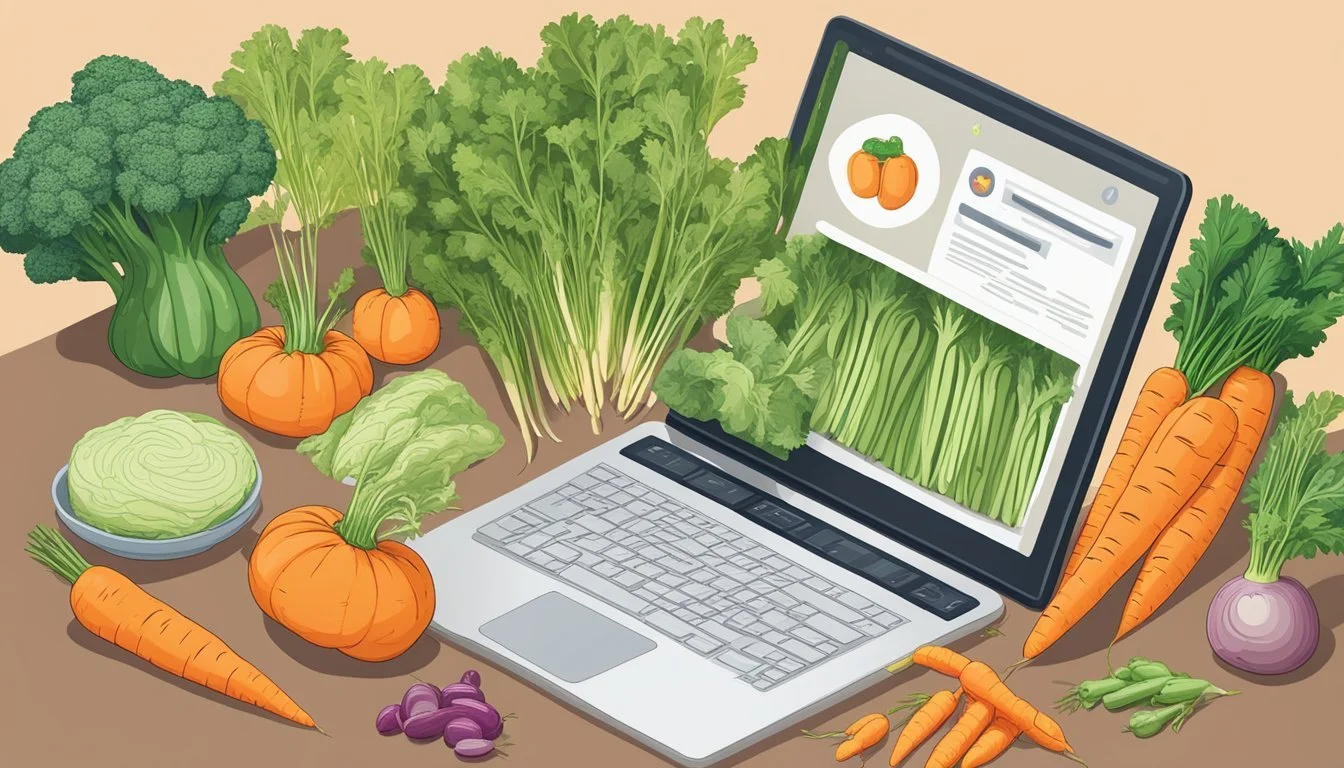Pickled Carrots Substitutes
Top Alternatives for Every Recipe
Pickled carrots are a versatile addition to many dishes, offering a tangy crunch that brightens up flavors across various cuisines. When substitutions are needed, it's essential to consider both the vinegar and spices used in the pickling process. For a milder flavor, white vinegar and apple cider vinegar are excellent bases; these can be easily swapped for red or white wine vinegar to introduce a slightly different taste profile.
If specific spices are unavailable, common alternatives include mustard seeds, cumin seeds, and black peppercorns. Aromatic additions like ginger and garlic not only boost flavor but also offer health benefits. For those seeking a spicy kick, red chili peppers can be included or omitted based on personal preference.
Lastly, sweeteners like sugar or honey can be adjusted to taste, balancing the acidity of the vinegar and enhancing the overall profile of the pickled carrots. Experimenting with different combinations will help achieve the perfect pickled carrot substitute for any culinary need.
The Basics of Pickling Carrots
Pickled carrots are simple to make and add a delightful, tangy crunch to dishes. Key steps involve selecting quality carrots, preparing an effective brine, and following precise pickling procedures.
Selecting the Right Carrots
Choosing fresh, firm carrots ensures optimal texture and flavor in the pickled product. Smaller, young carrots are ideal as they tend to be sweeter and more tender.
Steps to follow:
Appearance: Look for vibrant orange color and smooth skin.
Size: Select uniform size for even pickling. Baby carrots or sliced regular carrots both work well.
Freshness: Avoid carrots with cracks or wilted tops.
Preparing the Brine Solution
The brine is crucial as it infuses carrots with flavor and preserves them. It typically includes vinegar, water, salt, and sugar.
Essential ingredients and their roles:
Vinegar: Provides necessary acidity to prevent bacterial growth. Use distilled white vinegar for a clean taste.
Water: Dilutes the vinegar to balance the tanginess.
Salt: Acts as both a seasoning and a preservative.
Sugar: Adds a touch of sweetness, complementing the vinegar’s tartness.
Basic Brine Recipe:
1 cup distilled white vinegar
1 cup water
1 tablespoon salt
1 tablespoon sugar
Understanding the Pickling Process
Proper pickling ensures safety and flavor retention. It involves heating the brine, immersing the carrots, and allowing adequate marination time.
Steps to ensure effective pickling:
Heating the Brine: Combine vinegar, water, salt, and sugar in a saucepan. Bring to a simmer until salt and sugar dissolve.
Packing the Jars: Place prepared carrots into sterilized jars. Pour hot brine over carrots, leaving some headspace.
Sealing and Marinating: Secure lids and refrigerate. Let sit for at least 24 hours for flavors to develop.
Patience is key, as the flavor intensifies over time. For spicier pickled carrots, add spices like garlic, dill, or chili flakes to the brine. Keep jars refrigerated to maintain quality and safety.
Choosing Substitutes for Pickled Carrots
When seeking alternatives to pickled carrots, it's essential to consider the flavor, texture, and seasoning adjustments required. Learn which vegetables make suitable substitutes, how to vary vinegar types, and the best approaches to seasoning changes.
Vegetable Alternatives
A variety of vegetables can effectively replace pickled carrots while offering their unique tastes and textures. Pickled onions provide a mild yet tangy flavor, perfect for those looking for a subtle change.
Pickled radishes deliver a peppery kick and striking color, adding visual appeal to dishes. For a sweeter option, pickled beets are excellent, though they will impart a vivid hue to the brine.
Pickled peppers add a spicy element and can range in heat, adaptable to personal taste preferences.
Vinegar Variations
The type of vinegar used in pickling plays a crucial role in the final taste of your vegetables.
Apple cider vinegar brings a sweet and fruity undertone.
White vinegar offers a clean, sharp acidity that is versatile for many vegetables. Less common options like rice vinegar can provide a delicate sweetness that complements lighter vegetables like pickled radishes and cucumbers.
Customizing vinegar types can help achieve the desired flavor profile for the substituted vegetables.
Adjusting Spices and Seasonings
To ensure your pickling brine is flavorful, it’s important to balance seasonings appropriately when using substitute vegetables.
For those who enjoy a crunchy texture, using mustard seeds, dill, and garlic can enhance the crunch and flavor intensity. Sugar and salt levels should be adjusted based on the sweetness and natural sodium levels of the substitute vegetable.
Adding spices like cumin, coriander, or peppercorns can augment the brine's complexity, enhancing the unique qualities of each vegetable. Whether aiming for a mild or robust flavor, adjusting the seasoning mix is key to a successful pickling process.
Pickled Carrots Recipe and Preparation
Making pickled carrots involves choosing the right spices and techniques to achieve the desired tanginess and crunch. This section covers a classic recipe and a quick technique for pickling carrots.
Classic Pickled Carrots Recipe
The classic pickled carrots recipe ensures a balance of flavors and a longer shelf life due to the vinegar-based brine. Prep time for this recipe is around 15 minutes, with a cook time of 5 minutes.
Ingredients:
1 pound of carrots, peeled and cut into sticks or rounds.
1 cup of distilled white vinegar.
1 cup of water.
1 tablespoon of salt.
1 tablespoon of sugar.
1 teaspoon of mustard seeds.
2 garlic cloves, peeled and smashed.
Optional: 1 sprig of dill, 1/2 teaspoon of peppercorns, and a few slices of fresh ginger or star anise.
Instructions:
Prepare the Brine: In a saucepan, combine vinegar, water, salt, and sugar. Bring to a boil, then reduce heat and simmer until sugar and salt are dissolved.
Pack the Jars: Place garlic, mustard seeds, and optional spices into sterile jars. Add the carrot pieces.
Add the Brine: Pour the hot brine over the carrots, filling to just below the rim. Seal the jars.
Marinate: Refrigerate for at least 12 hours before serving for best flavor.
Quick Pickled Carrots Technique
For those seeking a fast and simple method, the quick pickled carrots technique is ideal. It requires less time and still delivers on flavor. Prep time is about 10 minutes, with a cook time of only 5 minutes.
Ingredients:
1 pound of carrots, grated or thinly sliced.
1 cup of distilled white vinegar.
1 cup of hot water.
1 tablespoon of salt.
1 tablespoon of sugar.
Instructions:
Combine Brine Ingredients: Mix vinegar, hot water, salt, and sugar in a bowl or a jar. Stir until dissolved.
Add Carrots: Place the prepared carrots into a large mason jar or glass container.
Pour Brine: Pour the brine over the carrots, ensuring they are fully submerged.
Shake and Marinate: Seal the jar and shake to mix well. Let it sit at room temperature for at least 1 hour before refrigerating.
Both methods offer unique benefits: the classic recipe provides depth of flavor and longer preservation while the quick technique is ideal for immediate use. Choose based on your time constraints and flavor preferences. DiACkled carrots can be used in various dishes or enjoyed as a quick snack.
Incorporating Pickled Carrots in Meals
Pickled carrots bring a unique zing and crunch to a variety of dishes, enhancing their flavor and texture. Whether used as a condiment or creatively integrated into culinary creations, these tangy, crunchy vegetables are highly versatile.
As a Condiment or Side Dish
Pickled carrots make an excellent addition to sandwiches and burgers, providing a zesty contrast to the richness of meats and cheeses. For salads, tossing in pickled carrot sticks or rounds can add a burst of flavor and a pleasant crunch.
When included in tacos and burritos, they offer a refreshing balance to spicy ingredients. As a quick snack, they can be enjoyed straight from the jar, making them a convenient and healthy option. On a charcuterie board, pickled carrots serve as an eye-catching and tangy complement to cheeses and cured meats.
Creative Culinary Uses
Incorporate pickled carrots into grain bowls to boost both nutrition and flavor, perfect for rice, quinoa, or couscous bases. Their crunchy texture pairs wonderfully with soft grains, and their tartness can enhance the overall dish.
For an unexpected twist, use pickled carrots in stir-fries, adding them at the last minute to maintain their crispness. In breakfast dishes, such as omelets or frittatas, small pieces of pickled carrots can introduce an intriguing tang. Additionally, their vibrant color and flavor can elevate sushi rolls and wraps, offering a distinctive taste that stands out.
Nutritional and Dietary Information
Pickled carrots offer a range of health benefits, including low calorie content and rich vitamin A levels. They're suitable for various dietary preferences such as vegan and gluten-free diets.
Health Benefits of Pickled Carrots
Calories and Fat Content: Pickled carrots are low in calories, making them an excellent snack for weight management. One cup typically contains about 50 calories and negligible fat, which helps maintain a balanced diet.
Rich in Vitamin A: These carrots are an excellent source of vitamin A, essential for vision, immune function, and skin health. One serving can provide over 100% of the daily recommended intake.
Dietary Preferences: Pickled carrots are inherently vegan and gluten-free, making them accessible to those with these dietary restrictions. They contain no cholesterol, supporting heart health.
Additional Nutrients: Besides vitamin A, they include minor amounts of vitamin C, fiber, and antioxidants, which contribute to overall wellness and digestive health. Their crunchy texture also aids in satiety, helping curb excessive eating.
Understanding Flavor Variations
Different spices and types of vinegar can dramatically change the flavor profile of pickled carrots, making them a versatile addition to many dishes.
Experimenting with Different Spices
Selecting various spices can impart unique flavors to pickled carrots.
Garlic and ginger add a robust, aromatic touch. Adding black peppercorns introduces subtle heat, while cloves provide a warm, sweet note.
For those seeking a citrusy flavor, coriander seeds can be included. The combination of these elements can be adjusted based on personal preference and the desired flavor intensity.
An example mix might include:
1 clove garlic
1 tsp black peppercorns
½ tsp coriander seeds
A slice of fresh ginger
Impact of Vinegar Types on Flavor
The type of vinegar used has a significant impact on the taste of pickled carrots.
White vinegar gives a sharp, clean acidity. Apple cider vinegar imparts a milder acidity with a fruity undertone.
Using different vinegars can yield diverse results. For instance, apple cider vinegar paired with coriander seeds and garlic creates a sweet and tangy profile.
Experimenting with different combinations can help in discovering the most pleasing flavor for your pickled carrots.
Community and Social Media Insights
Communities and social media platforms offer extensive insights into trending pickled carrot substitutes and innovative user-generated recipes.
Popular Pickled Carrot Trends
On Instagram, several popular trends emerge. Rainbow carrots stand out due to their vibrant colors, making them visually appealing. Food enthusiasts often share images featuring pickled rainbow carrots, creating a stunning visual impact.
Cucumbers and radishes are increasingly substituted for pickled carrots, beloved for their crisp texture and tangy flavor.
These trends are driven by the appeal of unique presentations and the desire for new taste experiences. Reviews often highlight the added crunch and unique taste contributed by using these substitutes.
User-Generated Content and Recipes
User-generated content is rich with creative recipes that substitute pickled carrots. Fans on social media platforms like Instagram share their versions of pickled vegetable assortments, often featuring cucumbers and radishes.
These recipes frequently appear in engaging formats—reels, stories, and carousel posts—detailing step-by-step instructions. Community members offer tips for preparation, such as using vinegar and seasoning blends.
These user-driven insights provide practical, real-world applications, encouraging others to experiment with homemade pickled condiments inspired by creative social media posts.

